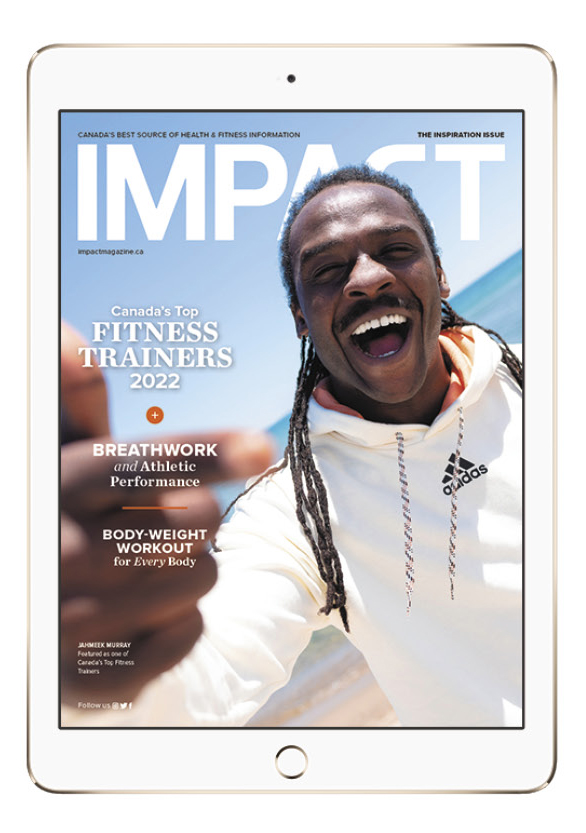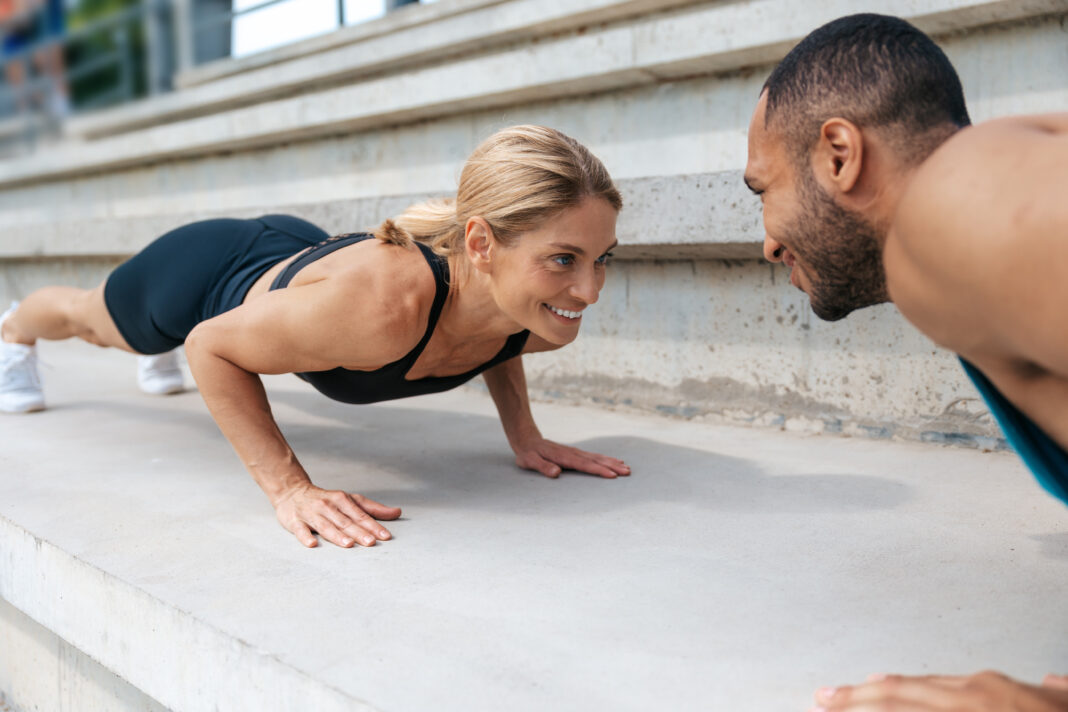How fit are you? Regularly testing and recording fitness levels can help any athlete stay motivated and set more realistic goals, along with answering the much-needed question: are my workouts working for me?
We spoke to the industry’s top trainers for their tried-and-true fitness assessments:
1. START STRETCHING: FLEXIBILITY TEST
With the pursuit of building muscle or shedding a couple pounds, flexibility is often a fitness component left behind–or let’s face it, skipped altogether. Adding flexibility assessments such as the sit and reach test, can help keep you accountable to keeping the performance-boosting habit of stretching in your daily routine. Along with measuring lower back and hamstring flexibility, regularly completing this staple flexibility test coined in 1952, can help reduce injury and improve posture.
To complete this test, sit on an even surface with legs stretched out in front of you and soles of the feet against a box. Palms should face downwards aligned with either leg and the back of your knees should remain pressed flat into the floor. Reach forward as far as you can.
“Keep your back straight throughout the movement, no jerky movements and never force the stretch,” says Paul Nam, Certified Personal Trainer and Owner of The Workout Loft. “Go only as far as your body will let you.” Frequency: Daily
SCORE:
• Below Average = Shins
• Average = Below Ankels
• Above Average = Toes
Results can be measured based on the area that is able to be reached (and held) for 2-3 seconds. To accurately track your improvement, also record what type of warm-up (if any) preceded testing. Traditionally, testing is done without any warm-up.
2. PUSH YOUR LIMITS: STRENGTH TEST
Measure the muscular strength and endurance of the upper body with this non-stop, push-up test. Keep a steady pace throughout the repetitions as you complete as many push-ups (with good form) as you can without stopping. To modify this test, complete the push-ups from your knees. However once you can complete 10 knee push-ups, switch to push-ups on your toes. Frequency: 2-3 per year.
SCORE:
Push-Up Test (Men)
| Age | 20-29 | 30-39 | 40-49 | 50-60 |
| Above Average | 24 | 21 | 17 | 13 |
| Average | 15-19 | 13-17 | 10-14 | 7-9 |
| Below Average | 4-8 | 2-6 | 1-4 | 1-2 |
SCORE:
Push-Up Test (Women)
| Age | 20-29 | 30-39 | 40-49 | 50-60 |
| Above Average | 20 | 16 | 12 | 8 |
| Average | 7-9 | 5-7 | 3-5 | 2-4 |
| Below Average | 1-3 | 1-2 | 1 | 1 |
“The idea here is to improve on your own score,” says Nam. “If you’re a beginner, try to find a workout buddy you can do the test and train with. Having someone else to talk to and train with will work wonders with motivation and reaching goals.”
3. ROW TIME: CARDIOVASCULAR TEST
After a brief warm-up, test your cardiovascular health and endurance by rowing two kilometres as fast as you can. “We like this test because it’s a great way of evaluating cardiovascular fitness through a full-body physical challenge,” says Innovative Fitness Trainer Sean Allt. Frequency: Every 90 Days.
SCORE:
• Below Average = 9 Minutes
• Average = 8 Minutes
• Above Average = 7.5 Minutes
• Elite = 7 Minutes
Along with recording your time, wear a heart-rate (HR) monitor to record max HR during the test, HR immediately upon completion, HR one minute after completion.
“When it comes to evaluating one’s fitness level, first and foremost, we encourage our clients to compare their current score to their own previous score as a means of evaluating the progress they’re making,” says Allt. “For those who need a little extra competitive motivation, Concept 2 maintains worldwide rankings on their website that can be used as targets to shoot for.”
4. STRONG TO THE CORE: STABILITY TEST
The key to proper plank testing is proper form. Start by lying face down with your legs extended and your elbows bent. Push your forearms and toes into the ground to raise your body in a straight line from the top of your head to your heel. Keep your body aligned by keeping your gaze down and not allowing your hips to rise or sag. Frequency: Every 8-12 Weeks
SCORE:
• Below Average = 10 Seconds
• Average =20-30 Seconds
• Above Average = 60 Seconds
“Although 60 seconds has often been an industry standard of good, ‘good’ for whom?” says Dione Mason, fitness and lifestyle coach who reminds her clients to take generalized scoring with a grain of salt. “I prefer to have an individual approach in training since it’s not a competition.
MIND THE MENTAL GAINS
While these four trainer-approved fitness assessments can help you test your endurance, strength, balance, and flexibility, there is one more key component to fitness that should be consistently monitored–your mental fitness. Testing with these four methods should be motivating, not discouraging. If you’re feeling good physically and mentally post-workout, your workouts are likely working for you.
“I encourage people to focus on their mental health over physical results,” says online fitness trainer, Emily Thorne. “I always ask clients how they feel after each workout. If they’re exhausted, great. They’re done for the day and achieved a killer workout. If they feel like they could have pushed harder, then they know they can step up their workouts.”

Read This Story in Our 2022 Inspiration Digital Edition
Read about Canada’s Top Fitness Trainers 2022. Need new ideas for your next workout. Test your fitness levels and see how you measure up. World-renowned breath expert, Richie Bostock shows us how to breathe correctly, 7 yoga poses for a better sleep, recipes and much more!

















